TOP
Schedule/place
Admission guid
Related school
Twitter
Contact us
Reference doc
Japanese Site






Schedule/place
Admission guid
Related school
Contact us
Reference doc
Japanese Site
・
・






・
・
・
・
Gallery KUMO・
・
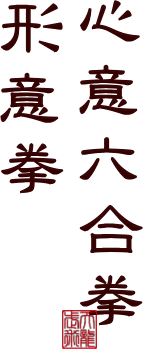 |
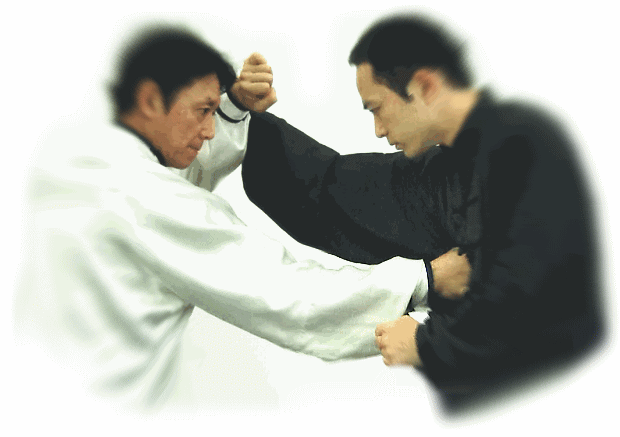 |
・
・

・
Xinyiliuhequan and Xinyiquan mainly practice repeatedly one form. And there
are other styles combining each form. They are good at battle at short
distances. Because they train the power of a blow thoroughly,that excellent
for fighting. Especially Xinyiliuhequan is called "Fighting Wushu".
It is known as a martial art of likes to fight. Many Chinese martial arts
are losing the way to fight in modern China, but Xinyiliuhequan is almost
the same style since at the time of Ming Dynasty, it is a very precious
martial art that leaves a simple, rustic and rough style to the present
age.
Ji Jike is the man at the end of the Ming period in China, he created Xinyiliuhequan
based on how to handle spears, it was mainly handed down among Muslim people
in Henan Province of China. Xinyiliuhequan mainly has 10 animal styles
(dragon, tiger, monkey, horse, chicken, yao, swallow, snake, hawk, bear).
And it has combination of several styles of 10 animals called Sibachui,Xinyizihe
etc. and it also has Xinyiliuhe sword, Xinyiliuhe both hands sword, Xinyiliuhe
spear, Xinyiliuhe rod, Xinyiliuhe joint 2rod, Xinyiliuhe chicken's nail
scythe etc. Through a simple form of repeat practice, there are practice
method to match the four elements(mind, intention, energy, force), and
to cultivate the explosive power of attack. One of the features of Xinyiliuhequan
is a short and low kick that attacking knees and shins. It is said that
Xinyiliuhequan is best of the fight style in Chinese martial arts.
・
・
・
・
Xinyiquan (Saturday AM11:00~PM1:00)
Li Luoneng is the man at the end of the Qing period in China, he learned Dai style Xinyiquan(Xinyiliuhequan) from Dai Longbang, he created Xingyiquan based on Dai style Xinyiquan. There are five kinds of simple fists based on the theory of Yin-Yang five elements, called Wuxingquan. And others are 12 animal styles (dragon, tiger, monkey, horse, da, chicken, yao, swallow, snake, tai, hawk, bear). Others has combination of several styles of Wuxingquan and 12 animals, called Wuxing lianhuanquan, Bashiquan, Zashiquan, 12huangchui etc. And there are some prearranged kumite (practice by two people), such as Wuhuabao, Wuxingshengke, Anshenpao etc. And also there are Xingyi sword, Xingyi 13 spear, Xingyi rod etc. The movement is simple, so it seems easy to learn at first, but there are many demands in simple movements, and it is said that is a most difficult of Chinese martial arts.
・
・
・
History of Xingyiquan and Xinyiliuhequan
Ji Jike is the man at the end of the Ming period in China, he was a master
of spears, people called him Spear of God. He created Xinyiliuhequan based
on how to handle spears. There is a record he taught at Shaolin Temple.
This is thought to be a Shaolin 12 styles that is transmitted to now. Xinyiliuhequan
is also transmitted to Chen Village, the birthplace of Chen Tai Chi. It
also had a big impact on style of Tai Chi.
Ji Jike taught Xinyiliuhequan to Cao Jiwu who is a bureaucrat of Luoyang
Shaanxi Province. Cao Jiwu taught to Ma Xueli, who is Muslim from Henan
Province, and Dai Longbang who is Han race from Shanxi Province. After
that Xinyiliuhequan divided into Henan style and Shanxi style. Further
Li Luoneng(1806-1890) learned from Dai Longbang, and he created Xingyiquan.
・
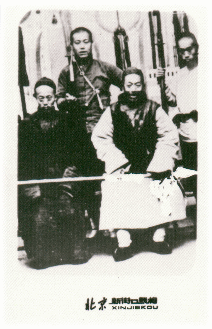 Li Luoneng from Hebei Province, he had an exceptional skill of Xingyiquan,
therefore, he was called Fist of God. He likes martial arts from childhood,
and he studied all of Dai style Xinyiquan. After returning to Shen Prefecture
Hebei Province, he added his own ideas to Xinyiquan. And he changed the
name to Xingyiquan.
Li Luoneng from Hebei Province, he had an exceptional skill of Xingyiquan,
therefore, he was called Fist of God. He likes martial arts from childhood,
and he studied all of Dai style Xinyiquan. After returning to Shen Prefecture
Hebei Province, he added his own ideas to Xinyiquan. And he changed the
name to Xingyiquan.
After learned Xinyiquan, he began security work of Meng Lu family in Hebei
Province since around 1856.
Because he opened the door and taught many people, there were a lot of
his disciples leaving names in history of Chinese Kung Fu. His famous disciples
are Che Yiji, Song Shirong, Liu Jilan, Guo Yunshen etc. Xingyiquan became
known more than Xinyiquan(Xinyiliuhequan). In the mid-1900s Xingyiquan
became one of the famous Chinese martial arts.
Currently Xingyiquan is distinguished in Hebei style and Shanxi style,
what is conveyed by Che Yiji, Song Shirong etc is called Shanxi style,
what is conveyed by Liu Jilan, Guo Yunshen etc is called Hebei style.
| Front row right Guo Yunshen, left Che Yiji |
・
Successors of Xingyiquan and Xinyiliuhequan
Che Yiji |
Song Shirong |
Song Tielin |
||
Li Zunyi |
Zhang Zhankui |
Wang Xiangji |
||
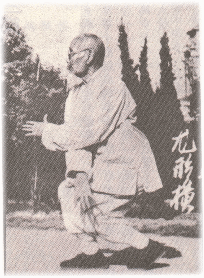 |
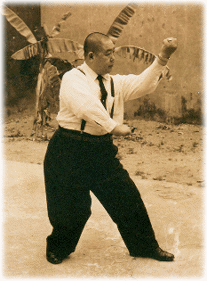 |
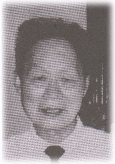 |
||
Xinyiliuhequan Long(Dragon) Style
|
Hebei Style
|
Pei Xirong |
・
Guo Yunshen taught Xingyiquan to Li Kuiyuan, Jian Yantang, Sun Lutang,
Shang Yunxiang, Wang Xiangji etc. Liu Jilan taught Xingyiquan to Li Zunyi,
Zhang Zhankui etc. Wang Shujin learned from Zhang Zhankui and Wang Xiangji,
he came to Japan from Taiwan after the World War II. He is the first person
to taught Tai Chi in earnest in Japan.
Kinbei Sato was the president of All Japan Chinese Martial Arts Association.
After Wang Shujin came to Japan, he gave Kinbei Sato private lessons for
about seven years. Kinbei Sato introduced Xingyiquan, Baguazhang and Tai
Chi to Japan, in those days most people in Japan did not know Chinese Martial
Arts. After that he also had friendship with Pei Xirong who learned Xinyiliuhequan
from Lu Songao in Shanghai, and he studied Xinyiliuhequan enthusiastically.
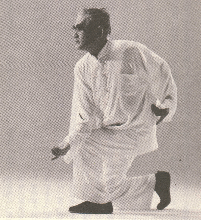 |
||
Xinyiliuhequan
|
Xinyiliuhequan Li Zunsi
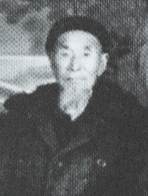 |
 |
||
Mai Jinkui |
Xinyiliuhequan, Chaquan
|
||
|
|||
・
Li Zunsi was born in Muslim family in Chenqiu Henan Province in 1918. He
entered Shaolin Temple at the age of 13, he practiced there for three years.
but because he was Muslim, he didn’t become a priest. After leaving the
temple, he learned 10lu Dantui, 20lu Chaquan(10lu regular style,10lu opposite
style) and Eighteen weapons from Ma Zhongqi who was the bodyguard of Yuan
Xikai. after that he learned Xinyiliuhequan from Mai Jinkui in Wuhan.
When he was 27 years old, East Asia's martial arts competition was held
in Japan in 1944. The Chinese team also participated in this competition.
The head of the Chinese team is Zhu Minyi, Members are Song Zhenfu(famous
master) , Hai Caoxiang(famous Chaquan master, he is a disciple of Ma Zhongqi,and
senior apprentice of Li Zunsi), Wan Changxiang(he is a disciple of Ma Jinbiao
in Shandong Province), and Li Zunsi etc. At that time Li Zunsi performed
Xinyisiba, Xinyiliuhe joint 2rod, and Xinyiliuhe big scythe, and he was
awarded, but one of the Japanese Kendo master did not feel comfortable
with this. He challenged Li Zunsi. Kendo master has a Japanese sword, and
Li Zunsi has a rod. "If I lose, please you take my corpse back to
China" Li Zunsi asked for that to Zhu Minyi before the match.
The match began. The Kendo master was looking at the opportunity to cut,
his sword had very excitement. On the other hand Li Zunsi who was prepared
for death was no longer upset, he kept the rod in front and responded calmly,
he was preparing to attack immediately by special technique of Xinyiliuhe
rod if there was a gap in the Kendo master.
Battle of Japanese sword vs rod is obvious the Japanese sword is advantageous,
but Kendo master was pushed by the calm and sharp eyes of Li Zunsi and
could not attack.
In the traditional text of Xinyiliuhequan, it says "no one can attack
the person with the right posture". It is essential to disturb enemy's
posture for attack, and you must make accurate attack immediately the moment
the enemy's posture has collapsed. In the traditional text of Xinyiliuhequan,
it says "Don’t hesitate, if you feel, attack immediately".
Li Zunsi took a step forward, at the same time he pierced the face of the
Kendo master at the tip of the rod, put a faint on him, the Kendo master
quickly avoided his attack and swung the sword to cut the rod, but because
Li Zunsi immediately pulled the rod, the enemy's sword couldn’t cut it.
Li Zunsi quickly advances left forward, and bounced up the sword with a
club with a shout "Ei!", this shout is a thunder voice of the
Xinyiliuhequan. The sword flew away from the enemy's hands, and the Kendo
master was surprised by the mighty power of Kung Fu and began to go back
a few steps. In the traditional text of Xinyiliuhequan, it says "Proceed
like a wind and attack like an arrow. The wind chase the moon and not depart
". Li Zunsi walked further and the game ended when he stopped the
rod with the enemy's throat. The Kendo master could not accept this result
and challenged him again, but it got the same result as the 1st time.
・
Xinyiliuhequan to practice at our association
Henan style Xinyiliuhequan
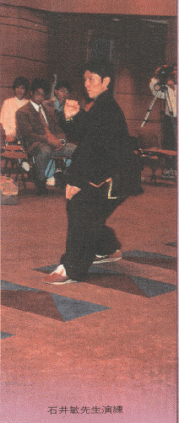 One of the Xinyiliuhequan to practice at our association is handed down
from Lu Songao to Pei Xirong, Du Jing, the other one is handed down from
Mai Jinkui to Li Zunsi.
One of the Xinyiliuhequan to practice at our association is handed down
from Lu Songao to Pei Xirong, Du Jing, the other one is handed down from
Mai Jinkui to Li Zunsi.
・
Hebei Style Xingyiquan
Hebei Style Xingyiquan to practice at our association is handed down from Wang Shujin to Kinbei Sato.
・
Shanxi Style Xingyiquan
Shanxi Style Xingyiquan to practice at our association is handed down from Xu Wenzhong to Feng Zhengbao. Song Shirong who is one of the best master of Xingyiquan. Song Tielin is a nephew of Song Shitang, Song Tielin taught Xu Wenzhong all the techniques of Xingyiquan.
・
・
Shanxi Style Xingyiquan Ishii Satoshi
|
